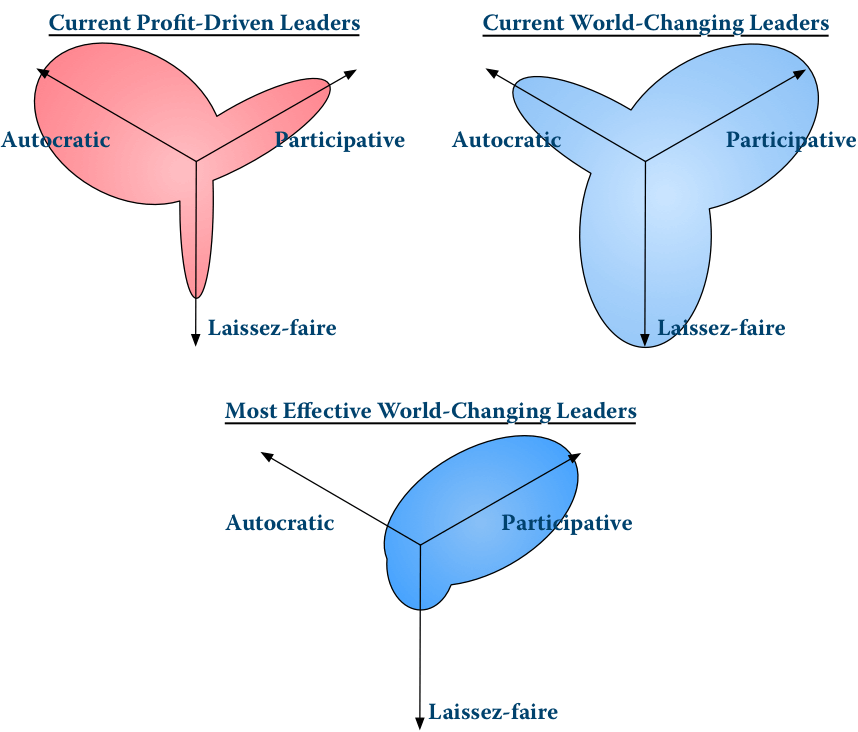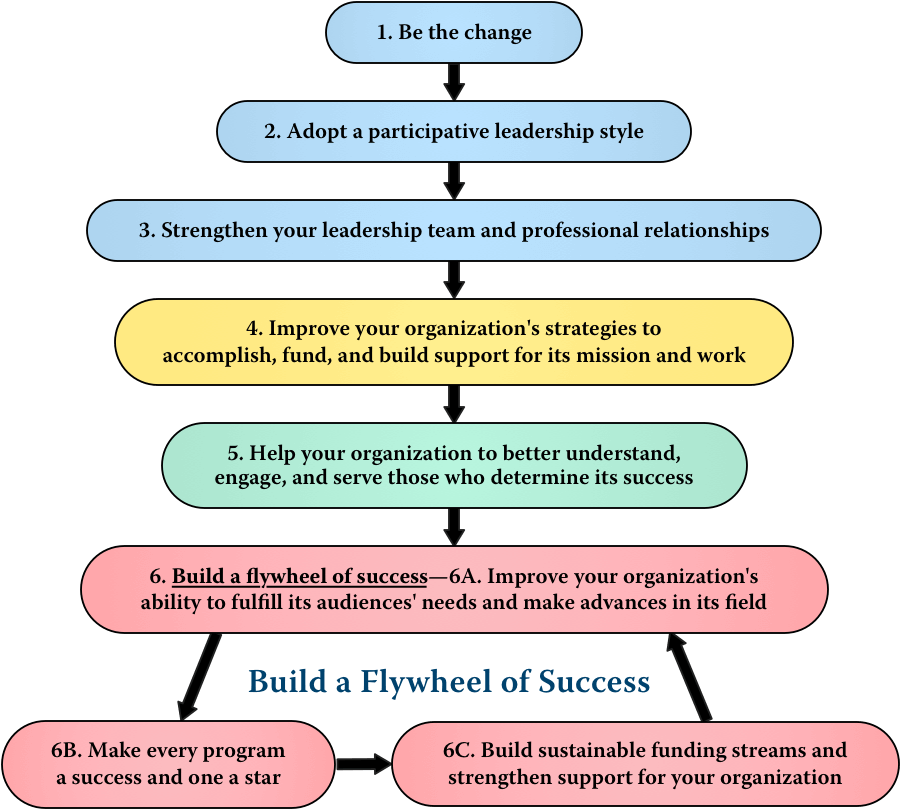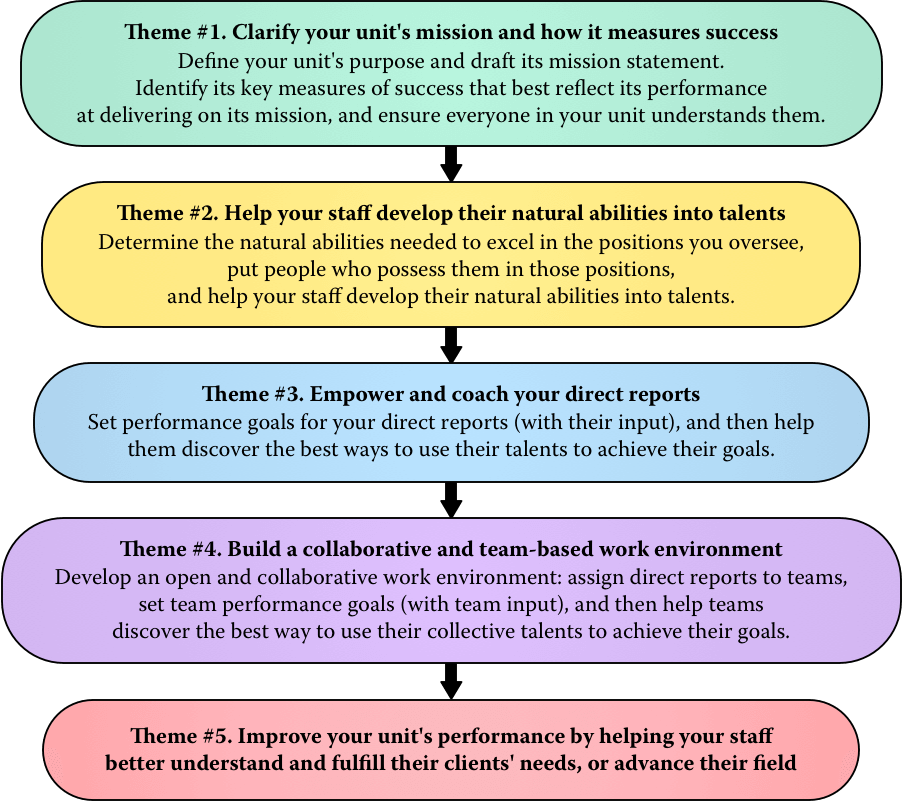Organizational development
Although strategic planning and marketing are discrete management fields, organizational development (OD) is not. Instead, it draws from various disciplines to improve an organization’s capabilities to deliver on its mission and create a great place to work. We incorporate key OD principles and practices in our Leadership Guide and Manager’s Survival Guide. We present others in our training courses listed in our Catalogue of Services and Training Courses.
But the key to unlocking the power of organizational development (OD) is through our consulting and training services. We tailor our OD services to the unique circumstances and challenges of each of our clients. The following list of OD benefits and services from our home page is but a small sample of how we can use OD to improve your organization’s performance and create a vibrant work environment:
- Build a more successful organization by using our unique approach to strengthen what supports, produces, and drives your success.
- Boost your staff’s motivation and overall performance through world-changing leadership and management.
- Spur innovation and push decision making down to the lowest appropriate level by adopting a team-based organizational structure.
- Improve the quality of your services and products while increasing productivity by streamlining your workflow within and across units—and incorporating quality improvement into your culture and work processes.
- Improve communication and reduce conflict through our communication training services.
Below we describe two of the disciplines on which OD is based—leadership and management.
Leadership
The job of leading a world-changing organization comes without a manual. Our free Leadership and Management Guides solve this problem. In them, we advocate for: Participative leadership and management. Gandhi’s example of “Be the change.” Creating a flywheel of success in your organization. The Gallup Organization’s advice to put people in positions where they can excel and coach them to turn their talents into strengths. Plus much more.
All of which frees up time for leaders and managers to work on their own projects.

Little is written about the best way to lead and manage world-changing companies, nonprofits, or public institutions.
We believe leading and managing these organizations requires different approaches than those for profit-driven companies because most:
- Have broader missions and work on more complex problems.
- Lack clear measures of success like profitability to guide strategy and evaluate performance.
- Serve and rely on more diverse audiences than traditional organizations.
- Employ more independent and unconventional people than traditional organizations.
We believe neither the prevailing plan-organize-lead-control model nor the hands-off laissez-faire approach used in many world-changing organizations is the best way to lead and manage them.
As part of our mission to provide the best strategic planning, strategic marketing, and organizational development resources to world-changing organizations, we designed the first leadership and management systems for them.
Our leadership model is designed to help leaders turn their organizations into flywheels of success. It includes essential elements of our strategic marketing and planning models so leaders can help their organizations better understand, engage, and satisfy the individuals and organizations that determine their success.
We built our participative management model around five management themes that we believe are critical to world-changing success: clarity of mission coupled with measures of success, talent, empowerment, teams, and performance.
World-changing Leadership—
Creating a flywheel of success
Most leadership books are written for corporate executives. We’ve found the plan-organize-lead-control and management-by-objective (MBO) leadership models they advocate often backfire in world-changing organizations.
So we’ve designed a unique world-changing approach to leadership, which is shown on the right. Our 65-page Leadership Guide: How to Build a More Successful World-Changing Organization explains how to adapt your leadership style to your organization’s culture and challenges.
World-changing management—
Building high-performance
units and teams
Most managers in world-changing organizations are expected to 1) manage complex programs, 2) supervise highly intelligent and independent staff, and 3) complete their own projects. So we developed a way to accomplish this extraordinary feat—and wrote a 25-page The Manager’s Survival Guide: Five Keys to Guide World-Changing Staff and Projects on our participative approach to management. Our world-changing management model is shown on the left.
We built it around five management themes we believe are essential to world-changing success: clarity of mission coupled with measures of success, talent, empowerment, teams, and high performance. Our management approach empowers your staff, builds strong teams, and produces successful programs. And it frees managers from time-consuming supervisory duties, so they have more time to work on their own projects.



